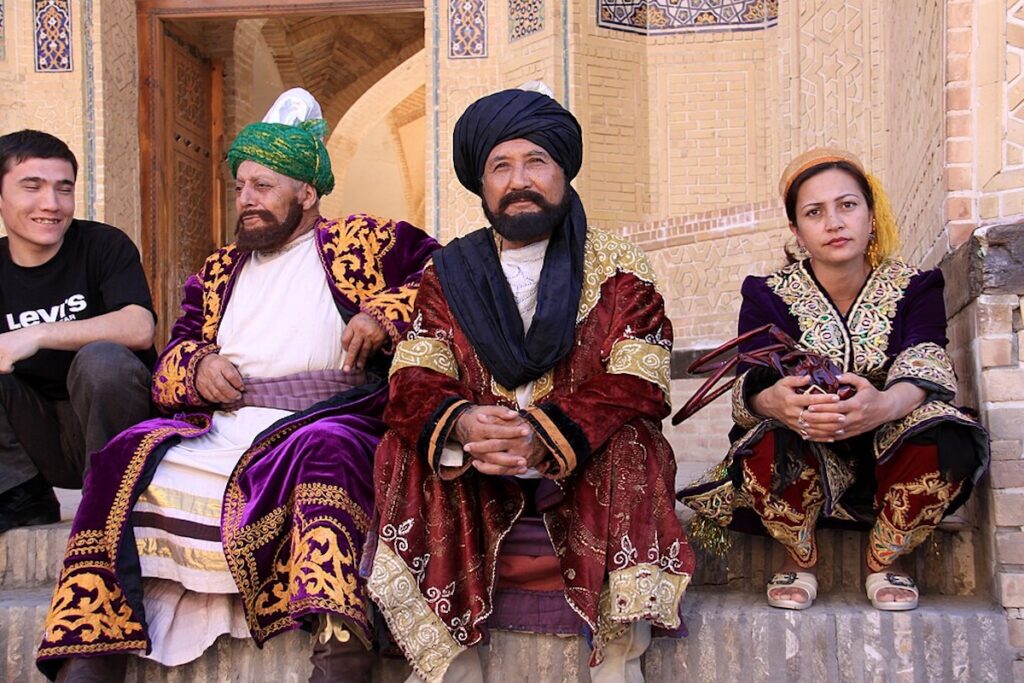The specter of great power rivalry, thought by some to be a relic of the 20th century, has been vividly resurrected by the war in Ukraine.
As the dust starts to settle on the immediate repercussions of this conflict, a new, perhaps more nuanced, theater for this competition is taking shape in Central Asia.
While observers have long noted the region’s strategic importance, the anticipated post-Ukraine normalization – a period of recalibration and re-engagement – positions Central Asia as a potential focal point where the interests of Russia, China and the United States are increasingly converging with often palpable tension.
Crucially, unlike other contested spaces, two of these powers share extensive borders with the region, adding a layer of geographical proximity that intensifies the stakes.
Central Asia, comprising Kazakhstan, Kyrgyzstan, Tajikistan, Turkmenistan and Uzbekistan, finds itself at a critical juncture.
Historically a crossroads of empires, the region’s post-Soviet independence has been marked by a delicate balancing act, navigating the influences of its powerful neighbors.
However, the absence of a robust, indigenous system of collective security leaves it vulnerable. Often dubbed the least integrated region globally, its fragmented political and economic landscape creates a geopolitical vacuum that major powers are increasingly eager to fill.
This lack of unified regional identity, while seemingly a weakness, paradoxically presents both a challenge and an opportunity for navigating the currents of great power competition.
The convergence of interests is undeniable. For Russia, Central Asia remains a vital sphere of influence, a buffer against perceived Western encroachment and a crucial transit route.
The war in Ukraine, while straining Moscow’s resources, has simultaneously highlighted the importance of its “near abroad” for economic sustenance and alternative trade routes.
China, through its Belt and Road Initiative (BRI), views Central Asia as the linchpin of its continental connectivity, a source of vital resources and a strategically important flank in its westward expansion.
The United States, while having experienced periods of fluctuating engagement, retains interests in counterterrorism, promoting democratic governance (albeit with waning emphasis) and, more fundamentally preventing the unchecked dominance of either Russia or China in this strategically significant zone.
This convergence of these great power interests, however, is not inherently benign. The potential for friction is palpable. Russia, weakened by the Ukraine conflict, is wary of China’s growing economic and potential political influence.
While current rhetoric emphasizes partnership, the long-term implications of China’s ascendance in the region are a source of unease in Moscow. The US, on the other hand, watches with concern as both Russia and China potentially expand their authoritarian models and limit democratic space in Central Asia.
Infrastructure projects, security cooperation agreements and even cultural exchanges have become arenas for subtle, yet significant, power projection. Without a strong regional framework, these competing interests risk escalating into a modern-day “Great Game”, albeit with more actors and more complex dynamics.
Herein lies the potential saving grace: the C5+1 framework. This diplomatic platform, bringing together the five Central Asian states and the United States, offers a unique opportunity to foster informal collective action while maintaining the flexibility necessary for individual states to engage with all external powers.
Unlike rigid security alliances that would inevitably alienate at least one major player, the C5+1 provides a venue for dialogue, coordination on issues of mutual concern (such as border security, economic development, and environmental challenges) and, crucially, a platform for the Central Asian states to articulate their collective interests.
The strength of the C5+1 lies in its informality. It allows Central Asian nations to engage with the US without being perceived as directly challenging Russia or China. Similarly, it provides a space for the US to maintain a presence and influence in the region without the explicit military commitments that could be seen as provocative.
This flexible structure can be leveraged to build resilience against undue pressure from any single great power. By fostering intra-regional cooperation on practical matters, the C5+1 can contribute to a stronger sense of regional identity, making Central Asia less susceptible to being merely a battleground for external rivalries.
However, the C5+1 is not a panacea. Its effectiveness hinges on the continued commitment of all parties and the ability of the Central Asian states to present a unified front. Internal divisions and varying levels of alignment with external powers could undermine its potential.
Furthermore, the framework must evolve to address the escalating geopolitical complexities, moving beyond primarily economic and developmental concerns to include more nuanced discussions on security and strategic autonomy.
The post-Ukraine landscape positions Central Asia as a region ripe for intensified great power competition. The absence of robust regional integration and collective security mechanisms creates vulnerabilities that external actors are keen to exploit to their advantage.
Yet within this challenge lies an opportunity. The C5+1 framework, with its inherent flexibility and inclusive nature, offers a promising avenue for fostering collective action and empowering Central Asian states to navigate this complex environment.
Whether Central Asia becomes a mere theater for great power rivalry or a region that successfully leverages its strategic location to its own advantage will depend, in large part, on the effectiveness and evolution of frameworks like the C5+1 in shaping a future where cooperation, not competition, defines its trajectory.
For policymakers in Washington, Beijing and Moscow, understanding and engaging constructively with this dynamic will be crucial to ensuring stability and prosperity, not just for Central Asia but for the wider Eurasian landmass.
Miras Zhiyenbayev is head of the Foreign Policy and International Studies Program at the Maqsut Narikbayev Institute for Networking and Development (MIND) in Astana, Kazakhstan


